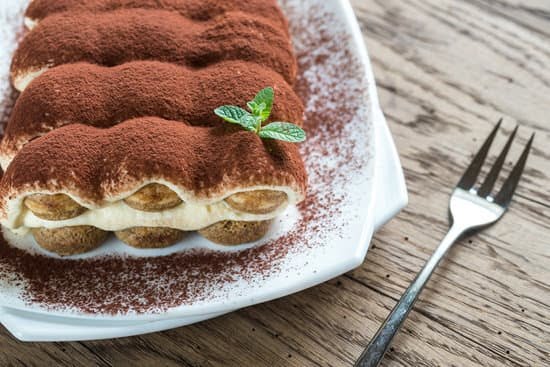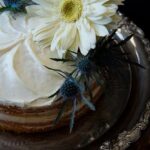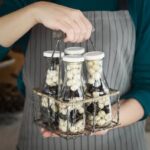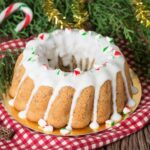Cake decorating is an essential skill for any aspiring baker or pastry enthusiast. Whether creating a special occasion cake or simply adding flair to a homemade treat, the art of cake decorating can truly elevate the presentation and taste of a sweet creation. In this article, we will explore the essential techniques and tools needed to decorate a cake like a professional, from mastering piping skills to working with fondant and sculpting 3D designs.
The difference between an amateur and professional cake lies in the decorating techniques employed. While anyone can learn to bake a delicious cake, it’s the artful decoration that truly sets apart a professional-looking confection. From perfectly piped borders to flawlessly smooth fondant, mastering these skills will allow you to create cakes that are not only visually stunning but also irresistibly delicious.
To achieve professional results in cake decorating, understanding the importance of proper preparation, using the right tools and ingredients is crucial. In the following sections, we’ll explore everything you need to know about cake preparation, mastering piping techniques, working with fondant, creative design ideas, advanced sculpting techniques, and finally adding that perfect finishing touch for a beautifully presented masterpiece. So let’s dive in and start creating stunning cakes that rival those found in top-notch bakeries.
Essential Tools and Ingredients
Must-Have Tools
When it comes to decorating a cake like a professional, having the right tools can make all the difference. Some essential tools include offset spatulas for smooth frosting application, piping bags and tips for intricate designs, a turntable for easy access to all sides of the cake, and a bench scraper for achieving sharp edges. These tools are commonly used by professional bakers and can elevate the overall look of your decorated cake.
Key Ingredients
In addition to using the right tools, it is important to have high-quality ingredients for professional cake decorating. This includes using premium butter for buttercream frosting, pure vanilla extract for flavoring, and top-quality chocolate for ganache or decorative elements. It’s also important to invest in food coloring gels instead of liquid food coloring, as they provide more vibrant and consistent colors without altering the texture of your icing.
Where to Find Them
To get your hands on these essential tools and ingredients, consider visiting specialty baking supply stores or online retailers that cater to professional bakers. Many of these items can also be found at craft stores that carry baking supplies. When purchasing tools and ingredients, be sure to read reviews and product descriptions to ensure you are getting the best quality items that will help you achieve professional results.
By investing in high-quality tools and ingredients, you are setting yourself up for success when it comes to decorating a cake like a professional. These fundamental elements are crucial for executing advanced techniques and achieving stunning results that will impress both clients and guests.
Mastering the Basics
Before diving into the world of advanced cake decorating techniques, it is imperative to master the basics of cake preparation. Properly preparing a cake sets the foundation for a beautifully decorated creation. Here is a step-by-step guide on how to prepare a cake for decorating:
- Leveling: Once the cake has cooled, use a serrated knife or a cake leveler to even out the top surface of the cake layers. This ensures that the layers stack evenly and creates a sturdy base for decorating.
- Filling: After leveling the cake, it’s time to add filling between the layers. Whether it’s flavored buttercream, fruit preserves, or chocolate ganache, spread an even layer of filling on top of one cake layer before adding another on top.
- Crumb Coating: To prevent any loose crumbs from showing through the final coat of icing or fondant, apply a thin layer of frosting to the entire outside of the cake. This helps create a smooth surface for decorating.
When choosing a type of cake for decorating, it’s important to consider factors such as flavor, texture, and stability. For example, butter cakes are great for intricate designs due to their denser texture, while chiffon cakes are light and airy, making them ideal for layered cakes with fillings.
Preparation is key when learning how to decorate a cake like a professional. By mastering these basic steps in cake preparation, you’ll be well on your way to creating stunning and visually appealing decorated cakes.
Perfecting the Art of Piping
Piping is an essential skill for anyone looking to decorate a cake like a professional. It allows for intricate designs, beautiful borders, and elegant lettering that can truly elevate the overall appearance of a cake. Whether you’re using buttercream or royal icing, mastering piping techniques is crucial in achieving a polished and professional look for your baked creations.
To start learning how to pipe like a pro, it’s important to familiarize yourself with different piping tips and their functions. From round tips for creating smooth lines and dots, to star tips for rosettes and swirls, each tip serves a unique purpose in cake decorating. Additionally, understanding the correct consistency of your icing is crucial for achieving clean and precise piped designs. Practice with different icing consistencies to find the right balance between firmness and smooth flow.
When it comes to achieving consistent piping results, proper hand placement and pressure are key factors. Hold the piping bag at a 45-degree angle and apply even pressure while guiding the tip with steady movements. Practicing on parchment paper or a practice board will help improve your hand coordination and control, allowing you to create more intricate designs with ease.
Lastly, don’t be afraid to experiment with different piping techniques. Try combining multiple tips to create unique textures or layer different colors for a vibrant and visually appealing finish. With patience and practice, you’ll soon be able to decorate cakes like a professional by mastering the art of piping.
Working With Fondant
Fondant is a versatile and popular cake decorating material that can elevate the appearance of any cake. Whether you are a beginner or experienced baker, mastering the art of working with fondant is essential for creating professional-looking cakes. In this section, we will provide a comprehensive guide on how to work with fondant, including rolling, covering a cake, and creating decorative elements.
To start, it’s important to ensure that your work surface and rolling pin are clean and lightly dusted with confectioner’s sugar or cornstarch to prevent sticking. When rolling out fondant, aim for an even thickness of about 1/4 inch to prevent tearing or cracking when transferring it onto the cake.
It’s also crucial to measure the diameter and height of your cake before rolling out the fondant to ensure that you have enough to cover the entire cake without any gaps.
When covering the cake with fondant, gently lift the rolled-out fondant using a rolling pin and drape it over the cake. Smooth out any air bubbles or wrinkles using a fondant smoother or your hands, starting from the top and working your way down the sides. Trim off any excess fondant at the base of the cake using a sharp knife for a clean finish.
Creating decorative elements with fondant requires precision and patience. From simple flowers and leaves to intricate figures and designs, fondant can be shaped and molded into various decorative elements to adorn your cakes. To achieve smooth edges and seamless joins when attaching these elements to your cake, use a small brush dipped in water as glue or royal icing for stronger adherence.
Mastering these techniques for working with fondant will allow you to create visually stunning and professionally decorated cakes that are sure to impress your friends, family, or clients.
| Aspect | Tip |
|---|---|
| Rolling Out Fondant | Aim for an even thickness of about 1/4 inch. |
| Covering Cake | Smooth out air bubbles using a fondant smoother or hands. |
| Creating Decorative Elements | Use water as glue or royal icing for stronger adherence. |
Creative Cake Design Ideas
When it comes to decorating a cake like a professional, creativity is key. Unique and innovative cake designs can elevate the visual appeal of a cake and make it truly stand out. One important tip for creating creative cake designs is to draw inspiration from various sources such as nature, art, fashion, and even architecture. By observing different patterns, textures, and colors in these areas, you can incorporate them into your cake designs to make them visually stunning and original.
Another important factor in creating creative cake designs is to play with different textures and colors. Experimenting with various piping techniques, edible paint applications, and fondant sculpting can add depth and dimension to your cakes. For example, incorporating metallic hues into your design or using edible flowers to create a vibrant floral pattern can take your cake decorating skills to the next level.
Additionally, precision is crucial when executing creative cake designs. Taking the time to plan out your design and ensuring that every detail is meticulously executed will result in a polished final product. Whether it’s geometric shapes, intricate lace patterns, or themed cakes, paying attention to detail will help you achieve professional-looking results.
| Tip for Creative Cake Designs | Description |
|---|---|
| Draw Inspiration from Different Sources | Observe patterns, textures, and colors in nature, art, fashion for design ideas. |
| Experiment with Textures and Colors | Play with piping techniques, edible paint applications, and fondant sculpting for depth. |
| Precision is Key | Meticulously plan out every detail of your design for polished results. |
Advanced Techniques
Decorating a cake like a professional goes beyond just simple piping and fondant work. Sculpting and creating 3D designs adds a whole new level of creativity and expertise to cake decorating. This advanced technique allows for the transformation of cakes into intricate and eye-catching works of art. Here’s how you can take your cake decorating skills to the next level with sculpting and 3D techniques:
- Choose the right type of cake: When it comes to sculpting and creating 3D designs, it’s important to start with a dense and sturdy cake that can hold its shape. Consider using a pound cake or a firm sponge cake as your base.
- Create a template: Before cutting into your cake, it’s helpful to create a template or outline of the 3D design you want to achieve. This will serve as a guide for shaping the cake into the desired form.
- Use support structures: Depending on the complexity of your design, you may need to use internal support structures such as dowels or straws to ensure that the cake holds its shape and doesn’t collapse under its own weight.
Sculpting and 3D cake decorating require patience, precision, and attention to detail. It’s important to practice these techniques repeatedly in order to master them. With dedication and creativity, you can elevate your cake decorating skills to an expert level, impressing friends, family, and clients alike with your stunning 3D creations.
Just like any other form of art, sculpting and 3D cake decorating allows for endless possibilities in terms of design and creativity. Whether you’re crafting an animal-shaped birthday cake or a realistic replica of an object, this advanced technique opens doors to limitless imagination and innovation in the world of cake decoration. So don’t be afraid to experiment with different shapes, textures, colors, and themes when exploring this exciting aspect of professional cake decorating.
Finishing Touches and Presentation
When it comes to cake decorating, the finishing touches and presentation are crucial in elevating the overall look and appeal of a cake. It is the final step that can truly make a cake stand out and impress any audience. In this section, we will explore tips and techniques for adding those perfect finishing touches to your decorated cake, as well as advice on how to present it for maximum impact.
Adding Final Touches
One way to take your decorated cake to the next level is by incorporating final touches such as edible glitter, luster dust, and decorative accents. These elements can add sparkle, shine, and an extra layer of visual interest to your creation. Edible glitter and luster dust can be applied with a food-safe brush or spray for a magical sheen, while decorative accents like edible flowers or molded chocolate pieces can create a stunning focal point.
When applying final touches, it’s important to do so with precision and care. Take your time to ensure that each detail is placed exactly where you want it for a polished finish. Whether you’re adding intricate piping details or delicate sugar flowers, attention to detail is key in achieving professional-looking results.
Presenting Your Masterpiece
In addition to adding final touches, the presentation of your decorated cake plays a significant role in its overall impact. Consider the occasion and theme of the event when deciding how to display your creation. For example, a tiered cake stand can add elegance to a wedding cake, while a themed cake could be showcased on a coordinating serving platter or decorated table.
It’s also important to consider lighting and background when presenting your cake. Ensure that the area where the cake will be displayed is well-lit so that all the intricate details are visible. A clean backdrop or complementary decorations can further enhance the visual appeal of your masterpiece. Thinking about these presentation details will help showcase your professionally decorated cake in its best light.
Conclusion
In conclusion, mastering the art of cake decorating is a journey that requires patience, practice, and willingness to learn. By following the essential tools and ingredients, mastering the basics of cake preparation, perfecting the art of piping, working with fondant, exploring creative design ideas, and advancing to sculpting and 3D cake decorating, anyone can decorate a cake like a professional. The key is to experiment with different techniques and designs to find your unique style.
Whether you’re looking to impress guests at special occasions or considering a career in baking and pastry arts, learning how to decorate a cake like a professional can be incredibly rewarding. From intricate floral designs to whimsical 3D creations, there are endless possibilities for expressing creativity through cake decorating. With dedication and practice, anyone can develop the skills needed to create stunning works of edible art.
Ultimately, the satisfaction and joy that come with mastering the art of cake decorating are unparalleled. The process of transforming a simple cake into a stunning masterpiece is not only fulfilling but also allows for personal expression and creativity. So don’t be afraid to take on new challenges in cake decorating – with determination and passion, you can elevate your skills to professional levels and delight others with your beautifully decorated cakes.
Frequently Asked Questions
How Do I Make My Cake Look Professional?
Making your cake look professional involves attention to detail and precision. Start by ensuring your cake layers are level and evenly frosted. Use a bench scraper for smooth edges and a turntable for even coverage. Piping bags and various decorating tips can help create intricate designs, while edible decorations like fondant or chocolate can add an elegant touch.
What Do Professionals Use to Decorate Cakes?
Professional cake decorators use a variety of tools and techniques to decorate cakes. These may include piping bags and tips for creating intricate designs, fondant or gum paste for sculpting three-dimensional shapes, edible paints or food coloring for vibrant colors, and airbrush machines for a smooth, professional finish.
Additionally, professionals may use specialized tools like sugar shapers, modeling tools, and stencils to create unique decorations.
What Are the 7 Different Cake Decorating Techniques?
There are seven primary cake decorating techniques that professionals often use to create stunning designs: piping, which involves using different tips to create swirls, rosettes, borders, and other decorative elements; fondant work, which includes covering cakes with a smooth layer of fondant and creating sculpted accents; gum paste flowers, where intricate flowers and foliage are crafted from edible gum paste; buttercream textures such as ruffles, waves, or petals; stenciling to add detailed designs or patterns using royal icing or powdered sugar; airbrushing for a seamless color application; and hand painting with edible food colors to create custom designs directly on the cake’s surface.
Each technique requires practice and skill to master but can result in professional-looking cakes.

Welcome to our cake decorating blog! My name is Destiny Flores, and I am the proud owner of a cake decorating business named Cake Karma. Our mission is to provide delicious, beautiful cakes for all occasions. We specialize in creating custom cakes that are tailored specifically to each customer’s individual needs and tastes.





